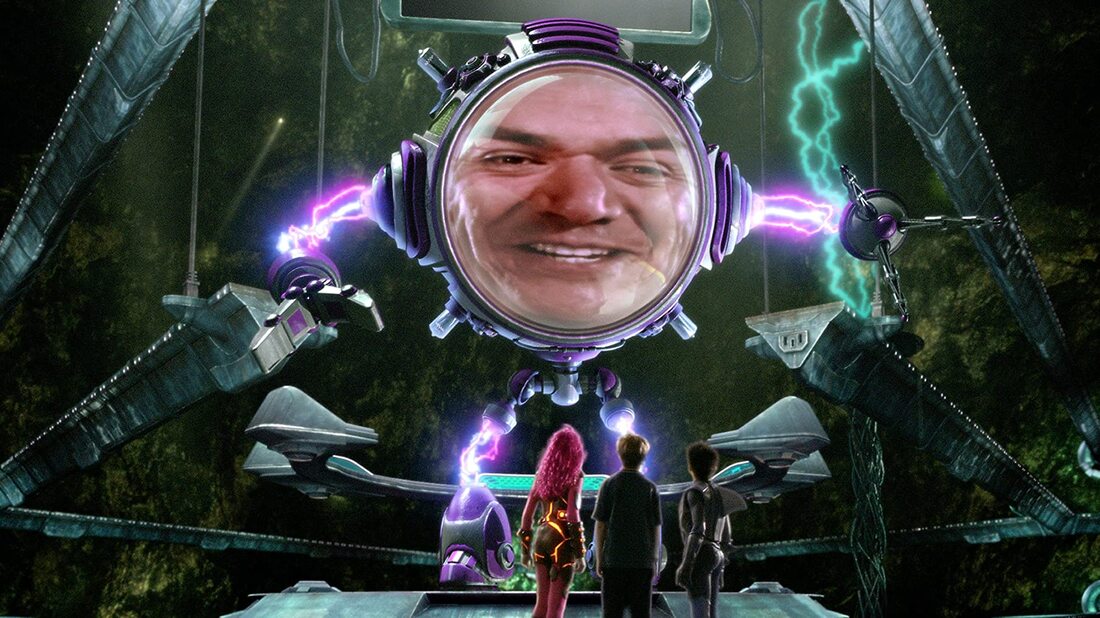I think a lot about media: The music I listen to, the shows I watch, the art I view, and the messages each of us produces and consumes. In particular, I think a lot about bad art. There’s something fascinating about art which fails to love up to the expectations set for it. I love janky, unplayable video games. I adore movies from the likes of Neil Breen, whose movies go increasingly off the rails.
I’m not alone either; I think it’s fair to say that everyone has that one terrible movie they love. For me, it’s Shark Boy and Lavagirl. For you it may be another movie, or a book or TV show or video game. Whatever the medium, there is something about junk that resonates with audiences.
God this movie rules
Bad media also has a foothold in the modern media landscape. Movies like The Room or Plan 9 from Outer Space are celebrated as a refreshing step back from the rigid convention of Hollywood, and there are an abundance of productions about watching and ragging on bad movies like Red Letter Media’s Best of the Worst or Mystery Science Theater 3000. Creating your own Sonic OC is a time-honoured ritual of internet culture these days. Review shows like AVGN have solidified video games like Dick Tracy into our memory. And yet despite the popularity of “bad art”, I think you’d be hard pressed to find any consensus among people describing what actually makes art good or bad.
How do we define quality? Link to heading
To some degree, quality is subjective. Every artist is at a different point in their own creative journey, and each begins with their own skills and inspirations. One cannot expect every artist to produce equivalent work. So how should art be judged?
The most obvious and common way to judge the quality of art is technical skill. Does a movie have good editing? How finely-rendered is the detail in a painting? People often equate a show of skill with high quality, and perceived lack of skill with low quality.
These beliefs about technical skill come in part from a set of conventions taught to artists, developed and passed down through time. Film has the 180-degree rule; Painters are taught about complementary colours; Writers make use of well-known literary devices. We might want to consider these conventions as being close to objectivity, since there is a level of consensus about their use. However, these conventions change with time and style, and an artist may choose to eschew any number of best practices for artistic purposes.
Outsider art also flies in the face of our assumptions about quality - Someone like Henry Darger may have created technically unskilled works but his illustrations are powerful, often disturbing masterpieces. Is his art bad simply because he was unskilled?
Despite the crude technique, the tension in this piece is unmistakable.
I had the luxury of asking an animator friend about this, and he suggested that art is good when it achieves the goals set out for it. When a work of art fails to capture an audience, it’s often because expectations were set poorly. For example, the Dragon Ball movie was marketed as an adaptation of the anime, but failed to live up to those expectations, and fans judged it accordingly.
These expectations can be artistic - how well a piece communicates its message - but they can also relate to money or audience. Ultimately, many creative endeavours are also commercial ones, and there is a lot of art that simply never makes much money or reaches its intended audience. For a working artist, these are important metrics.
And of course, people often describe art as being good or bad simply because they like or dislike it. People tend to know what they enjoy, even if they can’t communicate why they enjoy it.
Art is multifaceted, and each aspect of a work can be considered alone or together. Almost no art succeeds or fails on all fronts; there is plenty of art which lacks technical skill but still speaks to audiences, or is insightful and thought-provoking but fails commercially, or any other combination of measures. In truth, “good” and “bad” are convenient shorthands, simplifications we make out of necessity for easy communication. It’s not truly possible to encapsulate all of a work’s features into one word.
Why do I like bad art? Link to heading
When it comes to bad art, my medium of choice is video games. I’ve been a part of the speedrunning community for a number of years now and some of my favourite speedruns are of the sort you’d find in Awful Games Done Quick. I’ve probably watched a dozen Pac-Man 2 runs by now. I also contribute to an annual tournament called Kusogrande where we do blind races of bad games. The goal is to get as far as possible in an hour, and often it results in players struggling to play fast against systems which defy expectations. I even gave out games last year, it’s a lot of fun! For me, the enjoyment of a game considered “bad” comes from witnessing strange and unconventional creative decisions. So many games I’ve played in Kusogrande suffer from a failure of scope or eschew conventional controls or mechanics.
The most interesting ones by far are the games where some fundamental concept defies a player’s expectations. Last year I made some friends play The Amazing Spider-Man and Captain America in Dr. Doom’s Revenge! a DOS fighting game with a hilariously long name. Setting aside its look and the one sound effect, the game’s controls are unlike anything else: Hold CTRL, then press up, forward, or down to attack. Your attacks change if you’re far from the enemy, and you need to turn around manually. What’s more, you cannot jump towards a wall if you’re too close. Instead of allowing your character to slide along the wall like a traditional fighting game, the computer simply emits an upset beep. Sometimes, you can’t perform attacks in the corner because doing so would move your sprite outside the screen. It’s a silly limitation.
Games like Dr. Doom’s Revenge are unquestionably a failure of execution, but I also find them fascinating. The more you dig into a game, and the more bad games you play, the clearer it becomes how often “badness” is a symptom of some greater problem. Dr Doom’s Revenge likely has the control scheme it does because of the limitations of one-button joysticks, itself a side effect of developing for multiple platforms. The dev team had no experience making fighting games, but of course they didn’t - fighting games barely existed. Street Fighter II wasn’t even out yet!
It would be very easy for me to write off these games as junk not worth playing, but I think there’s far more value to be had in embracing them, figuring out what makes them tick, and learning about their history. I think understanding their limitations offers interesting takeaways about design. Plus, it can be fun to play a game and be surprised because the game defies your expectations.
Better bad than boring Link to heading
I won’t claim to be an expert in any medium. I can’t declare what is “objectively bad” (if such a thing even exists) and I can only present my own perspective, but there are cases where for me a work fails on all counts, and that is mediocrity. In Kusogrande, a regular struggle for game masters is finding games which are bad, but also interesting. There are hundreds of terrible games on the Gameboy Color, PS2, or Wii which would never make for a good race because their primary flaw is a lack of ambition. These are games which are only okay on all fronts, and as a result they are - I think - far worse to play than games which fail spectacularly. So paradoxically the worst kind of art sits right in the middle, unable to succeed on its own merits but not worth my time as a failure.
This art can also be worth talking about; Dan Olson’s Folding Ideas has a great episode on Fievel Goes West: An American Tail for Playstation 2, a game whose existence was seemingly motivated by cynicism and greed. There are endless essays about Hallmark’s mass-produced Christmas movies, which rake in profits despite being devoid of actual content. Don’t even get me started on the artistic merits of images produced by machine learning models. Each of these things is however very divorced from why I like bad media.
The takeaway Link to heading
Earlier, I said Sharkboy and Lavagirl was my favourite bad movie, but to tell you the truth, I don’t think it’s that bad. The special effects were dated on release, the acting is largely okay, and the story is completely unhinged. However, the movie also does a good job communicating its message and critically, it’s really fun to watch. It’s only a bad movie when viewed from certain angles.
And this is how I view all bad art, or at least how I try to. Media considered “bad” or “low quality” is often unexpected, surprising, charming, passionate, and even meaningful, but for any number of reasons failed to be what its author wanted. It can be fun to pick apart the failings of a work of art, but it’s often just as enjoyable to piece it together again, to understand the creative decisions behind it, and maybe to learn something new.